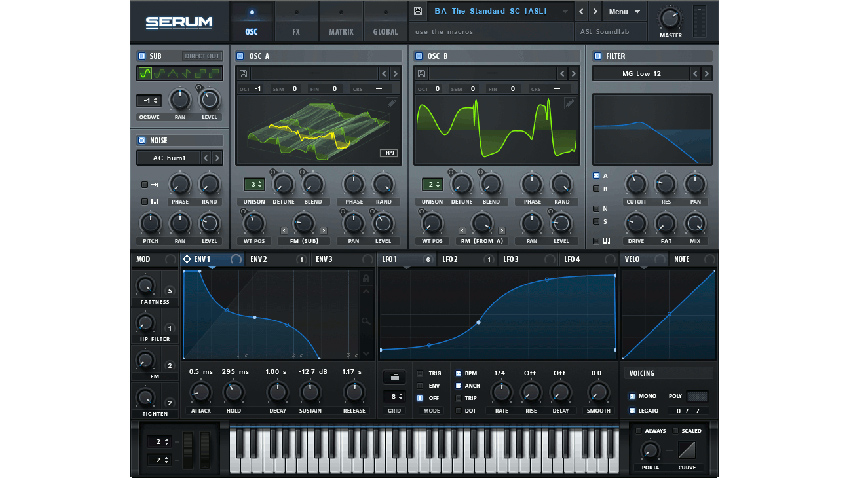


The modulation range is shown by a blue arc, which in this case I extended around the knob in order to scan the whole table. This is one of several methods of assigning modulation and took around a second from thought to execution.
#Serum plugin software update#
Instead, I set an LFO to automatically update the position, achieving the task by simply dragging the header tile of a chosen LFO to the knob in question. With over 140 tables to choose from, I could have happily spent days selecting wavetables and manually hurtling through them using the ‘WT Pos’ knob. They’re selected from categories such as Analog, Digital, Spectral, User and Vowel, and while the names give a good idea what to expect, it’s the pervasive clarity that hits you. Selecting a single oscillator unprocessed by filter or effects, I began auditioning the factory wavetables. It’s an architecture as familiar as it is logical, which means there’s nothing to stop you plunging in right away. The four possible sound sources consist of two independent wavetable oscillators, a sub-oscillator and a deluxe noise generator. I did find it odd that the obvious capacity for atmospherics and cinematic sound design wasn’t more fully explored, whilst simultaneously relishing doing so myself. Strolling through the collection, you’re left with an impression of shimmering uppers and rock-solid bottoms, peppered with razor-sharp leads.
#Serum plugin software plus#
Equally impressive, though, are the hard, deep and cutting basses, plus more snappy ‘plucks’ than a harpist on speed. A quick perusal reveals a wealth of sweet pads and bright, fuzzy strings, as you’d probably expect.
#Serum plugin software manual#
I doubt anyone will seek the manual with any great urgency.Īided by a crack team of patch designers, Serum ships with approximately 450 factory sounds. I couldn’t even find fault with the grey background as it perfectly highlights the subtly coloured wavetables, filters, envelopes and LFOs. Given the number of messy, confusing and inconsistent synth panels I find myself juggling each day, this one is a delight. Plain & SimpleĪfter a brief and pain-free installation, you’re presented with an interface of unparalleled directness and welcoming clarity. It ships with a large vault of prepared wavetables and an extensive toolkit to roll and shape your own. Perhaps because of the potential for complexity, it’s a synthesis type well-suited to the graphical world of VST-land, hence the many examples that exist, trumping the older hardware in fidelity and in the number of wavetables.Īvailable in VST, AAX and AU formats (both 32- and 64-bit), Serum is much deeper than its unencumbered panel implies. Movement and tonal complexity are introduced by scanning the table, either manually or by modulators such as LFOs and envelopes. The distinctive sound is derived from groups of digital waveforms, known collectively as wavetables. Wavetables were first developed by Wolfgang Palm of PPG, the concept later taken up by Waldorf and Access (amongst others). Its aims are simple: to be a ‘dream synth’, which in this case translates to a wavetable synthesizer producing high-quality sound from a ‘workflow-oriented’ interface. Serum is the first synthesizer from Xfer Records, creators of the enduringly useful LFO Tool. Serum’s slick interface belies an extremely flexible wavetable synthesizer.


 0 kommentar(er)
0 kommentar(er)
